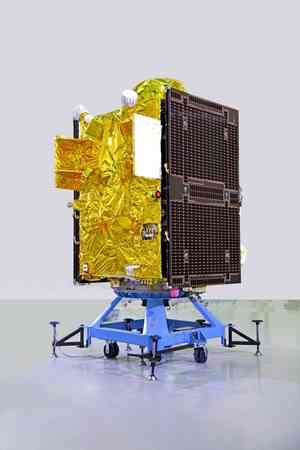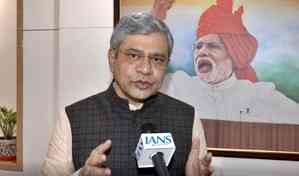ISRO’s NVS-02 navigation satellite faces technical glitch
The Indian Space Research Organization’s (ISRO) NVS-02 navigation satellite has encountered a technical glitch after being successfully injected into the intended Geosynchronous Transfer Orbit (GTO).

New Delhi, Feb 3 (IANS) The Indian Space Research Organization’s (ISRO) NVS-02 navigation satellite has encountered a technical glitch after being successfully injected into the intended Geosynchronous Transfer Orbit (GTO).
The NVS-02 navigation satellite lifted off on January 29 aboard the GSLV rocket from Satish Dhawan Space Centre in Sriharikota. It was the 100th launch from Sriharikota; and the 17th launch of GSLV.
The launch was successful, with the satellite successfully injected into the intended orbit.
“All the launch vehicle stages performed flawlessly and the orbit was achieved with a high degree of precision,” ISRO said, noting that solar panels on board the satellite were deployed and power generation started. Communication with the ground station was also established.
The technical glitch occurred during orbit raising operations, ISRO said in the latest update.
“The orbit raising operations towards positioning the satellite to the designated orbital slot could not be carried out as the valves for admitting the oxidizer to fire the thrusters for orbit raising did not open,” the national space agency said.
The agency, however, noted that the "satellite systems are healthy” and “is currently in elliptical orbit”.
ISRO informed that the agency is working on an “alternate mission strategies for utilising the satellite for navigation in an elliptical orbit”.
Radha Krishna Kavuluru, a former scientist at ISRO explained that satellites are first launched into a GTO, where they perform a series of engine burns (using onboard thrusters) to reach Geostationary orbit (GEO) -- a circular orbit 36,000 km above Earth’s equator.
Even as ISRO is exploring alternative solutions NVS-02's may suffer if it cannot reach GEO.
"The satellite’s utility may be compromised if it cannot reach GEO. By the way at a perigee of 200 km, NVS-02 stands on time for orbital decay due to orbital perturbations and space atmosphere drag,” Kavuluru said in a post on social media platform X.
The NVS-02 is part of the second-generation satellites for the Navigation with Indian Constellation (NavIC) system -- India’s own navigation system.
The navigation satellite system is designed to provide accurate Position, Velocity, and Timing (PVT) service to users in India as well as to regions extending about 1500 km beyond Indian land mass.
--IANS
rvt/


 IANS
IANS 








